- Home
- Robert Harris
Selling Hitler
Selling Hitler Read online
Selling Hitler
Robert Harris
APRIL 1945: From the ruins of Berlin, a Luftwaffe transport plane takes off carrying secret papers belonging to Adolf Hitler. Half an hour later, it crashes in flames…
APRIL 1983: In a bank vault in Switzerland, a German magazine offers to sell more than 50 volumes of Hitler’s secret diaries. The asking price is $4 million…
Written with the pace and verve of a thriller and hailed on publication as a classic, Selling Hitler tells the story of the biggest fraud in publishing history.
Robert Harris
SELLING HITLER
ACKNOWLEDGEMENTS
This account is based upon interviews with the main participants in the Hitler diaries affair; upon the many hundreds of pages of prosecution evidence generated by the subsequent trial; and upon the so-called Stern Report – the findings of the internal commission set up by Stern to examine how the fiasco occurred. Almost all of this information came to me on the understanding that its various sources would not be identified publicly. It would be invidious to try to single out the few who did speak freely; I hope I shall be forgiven if I thank them here collectively rather than individually.
My editor at the BBC, David Dickinson, was once again extremely understanding. My colleague Jane Ellison collaborated on the research, from the first interview to the last document: without her help, this book could not have been written.
ROBERT HARRIS
September 1985
Note
Most of the financial transactions concerning the Hitler diaries were conducted in Deutschmarks. In April 1983, when the diaries were published, the rates of exchange were:
£1 = 3.76 marks
$1 = 2.44 marks
DRAMATIS PERSONAE
Wilhelm Arndt: Adolf Hitler’s personal servant, entrusted with escorting the Führer’s ‘testament to posterity’ out of Berlin in April 1945
The Marquess of Bath: Owner of the world’s largest collection of Hitler’s paintings
Hans Baur: Hitler’s personal pilot
Randolph Braumann: ‘Congo Randy’, a close friend of Gerd Heidemann
William Broyles: Editor-in-chief of Newsweek
Gerda Christian: One of Hitler’s secretaries
Barbara Dickmann: Television journalist hired by Stern to help launch the Hitler diaries
Charles Douglas-Home: Editor of The Times
Manfred Fischer: Managing director of Gruner and Jahr, owners of Stern
Dr Max Frei-Sulzer: Swiss ‘handwriting expert’
Francois Genoud: Swiss lawyer representing the families of Hitler, Goebbels and Bormann
Frank Giles: Editor of the Sunday Times
Rolf Gillhausen: Stern editor
Otto Guensche: SS adjutant who burned Hitler’s body
Major Friedrich Gundlfinger: Luftwaffe pilot who flew Wilhelm Arndt out of Berlin in April 1945
Gerd Heidemann: Stern journalist responsible for obtaining the Hitler diaries
Gina Heidemann: Wife of Gerd Heidemann
Dr Josef Henke: Senior official of the West German Federal Archives
Dr Jan Hensmann: Deputy managing director of Gruner and Jahr
Peter Hess: Publishing director of Gruner and Jahr
Wolf Hess: Son of Rudolf Hess
Ordway Hilton: American ‘handwriting expert’
David Irving: British historian
Eberhard Jaeckel: Professor of History, University of Stuttgart
Medard Klapper: Arms dealer and confidence trickster who alleged he was in touch with Martin Bormann
Peter Koch: Stern editor
Peter Kuehsel: Financial director of Gruner and Jahr
Konrad Kujau: Forger of the Hitler diaries
Edith Lieblang: Konrad Kujau’s common law wife
Heinz Linge: Hitler’s valet
Brian MacArthur: Deputy editor, the Sunday Times
Werner Maser: West German historian
Rochus Misch: Führerbunker switchboard operator
Maria Modritsch: Konrad Kujau’s girlfriend
Reinhard Mohn: Chief executive, Bertelsmann AG
SS General Wilhelm Mohnke: Commander of the Führerbunker
Rupert Murdoch: Chairman, News International; owner, The Times, Sunday Times and New York Post
Henri Nannen: Founder and publisher of Stern
Lynn Nesbit: Senior Vice-President, International Creative Management
James O’Donnell: Author, The Berlin Bunker
Dr Klaus Oldenhage: Official of the West German Federal Archives
Maynard Parker: Editor of Newsweek
Leo Pesch: Journalist employed in Stern’s history department
Billy F. Price: Collector of Hitler paintings from Houston, Texas; author, Adolf Hitler: The Unknown Artist
August Priesack: Self-styled ‘professor’ and expert on Hitler’s art, consulted by Fritz Stiefel and Billy Price
Kenneth Rendell: American ‘handwriting expert’
Arnold Rentz: West German forensic chemist
Felix Schmidt: Stern editor
Christa Schroeder: One of Hitler’s secretaries
Gerd Schulte-Hillen: Manfred Fischer’s successor as managing director of Gruner and Jahr
Richard Schulze-Kossens: One of Hitler’s SS adjutants
Wilfried Sorge: Member of the management of Gruner and Jahr, responsible for selling the Hitler diaries to foreign news organizations
Franz Spoegler: Former SS officer, who offered Heidemann forged correspondence between Churchill and Mussolini
Fritz Stiefel: Stuttgart businessman, collector of Nazi memorabilia
Jakob Tiefenthaeler: Collector of Nazi memorabilia who acted as agent for Gerd Heidemann when he tried to sell Goering’s yacht
Hugh Trevor-Roper (Lord Dacre of Glanton): Master of Peterhouse, Cambridge; Independent National Director, Times Newspapers
Thomas Walde: Head of Stern’s history department
Gerhard Weinberg: Professor of Modern History, University of North Carolina
Peter Wickman: Stern correspondent based in London
Louis Wolfe: President, Bantam Books
SS General Karl Wolff: Heinrich Himmler’s Chief of Staff; Military Governor of northern Italy, 1943–45
Prologue
ON APRIL FOOL’S Day 1983 the distinguished British historian Hugh Redwald Trevor-Roper, first Baron Dacre of Glanton, was telephoned at his country home in Scotland by the Assistant Editor of The Times, Mr Colin Webb.
Among his many honours, Trevor-Roper had, in 1974, accepted an invitation to become an Independent National Director of Times Newspapers. For nine years his telephone had rung periodically with news of strikes, sackings and closures. But this call had nothing to do with routine Times business. It concerned a discovery of great historical significance. It was strictly confidential. The German magazine Stern, said Mr Webb, had discovered the private diaries of Adolf Hitler.
Trevor-Roper, a former Regius Professor of History at Oxford, was startled and immediately sceptical. ‘I said to myself, there are so many forgeries circulating in the “grey market”: forged documents about Bormann, forged diaries of Eva Braun, falsified accounts of interviews with Hitler…’ Besides, it was well known that Hitler disliked putting pen to paper and had virtually given up writing in his own hand altogether after 1933. As far as he was aware there was no evidence, either in the German archives or in the recollections of Hitler’s subordinates, to suggest that the German dictator had kept a diary. If he had, and if it had now been discovered, it would certainly rank as one of the greatest historical finds of modern times: Hitler, as Trevor-Roper himself had written, was the twentieth century’s Genghis Khan, the ‘political genius’ whose murderous influence upon mankin
d was still being felt four decades after his death. If this diabolical figure, contrary to all accepted beliefs, turned out to have kept a diary, it would provoke a sensation.
Webb explained that Stern was offering to sell the foreign serial rights in the diaries. Rupert Murdoch, the owner of Times Newspapers, was considering bidding not merely for the British and Commonwealth, but possibly for the American rights as well. The syndication negotiations were about to begin. In the meantime the diaries themselves were being kept in a bank vault in Switzerland. Webb said that Murdoch wanted an expert’s opinion before making an offer for the diaries. Would Trevor-Roper, as an authority on the period and a director of the company, be willing to act as an adviser? Would he fly out to Zurich and examine the material?
Trevor-Roper said he would.
In that case, said Webb, Stern would expect him in Switzerland at the end of the following week.
By the time Adolf Hitler had passed his fifty-second birthday, there was no longer a human being left in history who could provide a precedent for his impact on the earth. In January 1942, whilst he picked at his customary vegetarian supper at his headquarters in East Prussia, his soldiers were guarding U-boat pens on the Atlantic coast, shivering in dugouts on the approach roads to Moscow, sweating in tanks in the Libyan desert. In less than twenty years, he had passed from brawling provincial politician to imperial conqueror. He was remaking the world. ‘Mark my words, Bormann,’ he announced one evening over dinner, ‘I’m going to become very religious.’
‘You’ve always been very religious,’ replied Bormann.
But Hitler was not thinking of himself as a mere participant in some future act of worship: he was to be the object of it.
‘I’m going to become a religious figure,’ he insisted. ‘Soon I’ll be the great chief of the Tartars. Already Arabs and Moroccans are mingling my name with their prayers. Amongst the Tartars I shall become Khan…’
When the warm weather returned he would finish off the Red Army. Then he would ‘put things in order for a thousand years’. Giant roads would be built into Russia and the first of twenty million Germans, ‘soldier-peasants’, would start making their homes in a colony whose frontier would extend 250 miles east of the Urals. The Russians, denied churches and schools, educated only to a point at which they could read road signs, would be confined to vast, disease-ridden cities, patrolled from the air by the Luftwaffe. The Crimea would be exclusively German. Moscow would be razed to the ground and turned into an artificial lake. The Channel Islands would be handed over to the Strength Through Joy organization ‘for, with their wonderful climate, they constitute a marvellous health resort’. Every nation would have its part to play in Hitler’s New Order. The Norwegians would supply Europe’s electricity. The Swiss would be hotel keepers. ‘I haven’t studied the problem as regards Sweden,’ joked Hitler. ‘In Finland, unfortunately, there is nothing to be done.’ Opponents would be confined behind barbed wire in the lengthening chain of concentration camps now opening up in the Eastern territories. At the first sign of trouble, all inmates would be ‘liquidated’. As for the Jews, they would simply be ‘got rid of’. The future was a vista of endless conflict. A man’s first encounter with war, stated Hitler, was like a woman’s first experience with a man: ‘For the good of the German people, we must wish for a war every fifteen or twenty years.’ And in Berlin, renamed Germania, at the centre of this ceaselessly warring empire, would sit the Führer himself, in a granite Chancellery of such proportions that ‘one should have the feeling that one is visiting the master of the world’. The Berghof, his private home on the Obersalzberg, would, in due course, become a museum. Here, propped up in bed, while the rest of the household slept, Hitler had found the inspiration for his dreams, gazing out ‘for hours’ at ‘the mountains lit up by the moon’. When his dreams were reality, it would become a place of pilgrimage for a grateful race. ‘I can already see the guide from Berchtesgaden showing visitors over the rooms of my house: “This is where he had breakfast…” I can also imagine a Saxon giving his avaricious instructions: “Don’t touch the articles, don’t wear out the parquet, stay between the ropes…”’
Almost half a century has now passed since Adolf Hitler and his vision were buried in the rubble of Berlin. All that remains today of the Berghof are a few piles of stone, overgrown with moss and trees. But the repercussions of his career persist. ‘Si monumentum requiris, circumspice,’ concludes Alan Bullock’s study of Hitler: ‘If you seek his monument, look around.’ The division of Germany, the exhaustion of British power, the entrenchment and paranoia of Soviet Russia, the denials of freedom in the Eastern half of Europe, the entanglement of America in the Western half, the creation of the State of Israel and the consequent instability of the Middle East – all, in a sense, have been bequeathed to us by Adolf Hitler. His name has become a synonym for evil. Even the physical act of uttering the word ‘Hitler’ necessitates a grimace. In 1979, the British historian J. H. Plumb described him as a ‘curse’, the ‘black blight’ that overshadowed his youth:
The trauma of Hitler stretched over fifteen years for my generation, breaking lives, destroying those one loved, wrecking my country. So it has been difficult, well-nigh impossible, to think calmly of that white, moustachioed face, eyes ablaze like a Charlie Chaplin turned into a nightmare. Even now when I recall that face and hear that terrifying, hysterical, screeching voice, they create a sense of approaching doom, disaster and death.
Yet, hard though it may be, Hitler has to be understood….
In an attempt to come to terms with this phenomenon there were, by 1980, according to one estimate, over seventy biographies of Adolf Hitler in existence. There are twice as many biographies of Hitler as there are of Winston Churchill; three times as many as there are of Roosevelt and Stalin. Only Jesus Christ has had more words devoted to him than Hitler. The public appetite for these books is enormous. In 1974, Joachim Fest’s biography sold over 250,000 hardback copies in Germany alone. Two years later, John Toland’s Adolf Hitler sold 75,000 copies in the United States (at $15 each) and went into four printings within weeks of its publication. When David Irving began work on his study he wrote that ‘it was possible to speculate that “books on Hitler” outnumbered page for page the total original documentation available. This proved a sad underestimate.’ By 1979 the British Library and the Library of Congress listed over 55,000 items relating solely to Hitler and the Second World War. There are specialist books about Hitler’s childhood, his years in Vienna and his service in the army; at least half a dozen works are devoted specifically to his last days and death. There have been investigations into his mind, his body, his personal security, his art. We have first-hand accounts from his valet, his secretary, his pilot, his photographer, his interpreter, his chauffeur and a host of adjutants, ministers and generals. From one doctor (Morell) we know all we ever want to know – and considerably more – about the movement of Hitler’s bowels; from another (Giesing), the appearance of the Führer’s genitalia. We know that he liked cream cakes, dumb blondes, fast cars, mountain scenery; that he disliked lipstick, modern art, opinionated women and the screech of an owl.
The detail is immense and yet, somehow, the portrait it adds up to remains oddly unconvincing. Despite the millions of words which have been poured into explaining the gulf between Hitler, the private individual, and Hitler, the political prodigy, the two remain unreconciled. ‘We seem to be left with a phantom,’ wrote J. P. Stern, ‘a centre of Nothing.’ This inner emptiness helped enable Hitler to use himself like a tool, changing his personality with shocking abruptness to suit the task in hand. The charm of an Austrian gentleman, the brutality of a gangster, the ranting of a demagogue, the assurance of a diplomat succeeded one another in a kaleidoscope of performances which left his innermost thoughts a mystery. In the 1930s, an astonished official watched him carefully work himself into an artificial rage for the sole purpose of frightening an English diplomat; the performance over, he returned to his adv
isers chuckling, ‘Gentlemen, I need tea. He thinks I’m furious.’ Hitler remained an enigma, even to his most intimate advisers. ‘I got to know Adolf Hitler more closely in 1933,’ wrote Joachim von Ribbentrop at the end of the war.
But if I am asked today whether I knew him well – how he thought as a politician and statesman, what kind of man he was – then I’m bound to confess that I know only very little about him; in fact nothing at all. The fact is that although I went through so much together with him, in all the years of working with him I never came closer to him than on the first day we met, either personally or otherwise.
‘When a decision has to be taken,’ Hermann Goering told one diplomat before the war, ‘none of us count more than the stones on which we are standing. It is the Führer alone who decides.’ And General Jodl, at Hitler’s side throughout six years of war, was equally baffled. ‘To this very day,’ he wrote in 1946, ‘I do not know what he thought or knew or really wanted.’ He was utterly self-contained, mysterious, unpredictable, secretive, awesome. He was, as Hugh Trevor-Roper put it, ‘the Rousseau, the Mirabeau, the Robespierre and the Napoleon of his revolution; he was its Marx, its Lenin, its Trotsky and its Stalin.’ What a sensation it would cause if it were now discovered that such a man had left behind a diary….
On Friday, 8 April 1983, exactly one week after his initial conversation with The Times, Hugh Trevor-Roper presented himself at Terminal 2 of London’s Heathrow Airport. There he was met by Stern’s London representative, Peter Wickman, and at 11.15 a.m. they took off for Zurich.
Wickman, plump and garrulous, proved an amiable companion and the sixty-nine-year-old historian was soon launched into one of his favourite topics of conversation: the inordinate superiority of Oxford over Cambridge. (He once said that leaving an Oxford professorship for a Cambridge mastership was rather like becoming a colonial governor.) It was not until the stewardess had served lunch that the two men settled down to business.

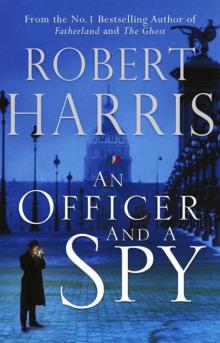 An Officer and a Spy
An Officer and a Spy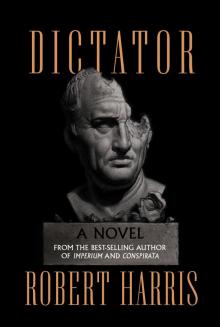 Dictator
Dictator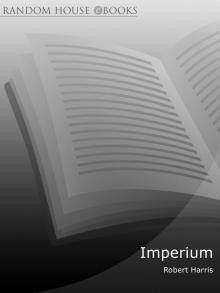 Imperium:
Imperium: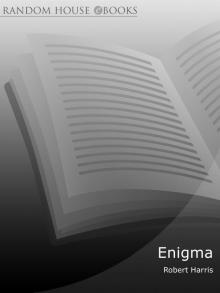 Enigma
Enigma Fatherland
Fatherland Dictator:
Dictator: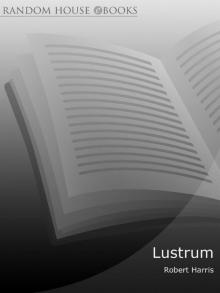 Lustrum
Lustrum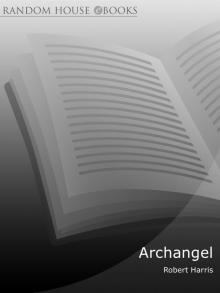 Archangel
Archangel Conclave
Conclave The Fear Index
The Fear Index The Second Sleep
The Second Sleep V2
V2 Lustrum c-2
Lustrum c-2 Imperium
Imperium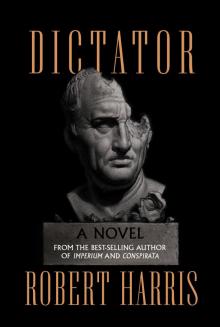 The Dictator
The Dictator Selling Hitler
Selling Hitler Archangel (Mass Market Paperback)
Archangel (Mass Market Paperback)